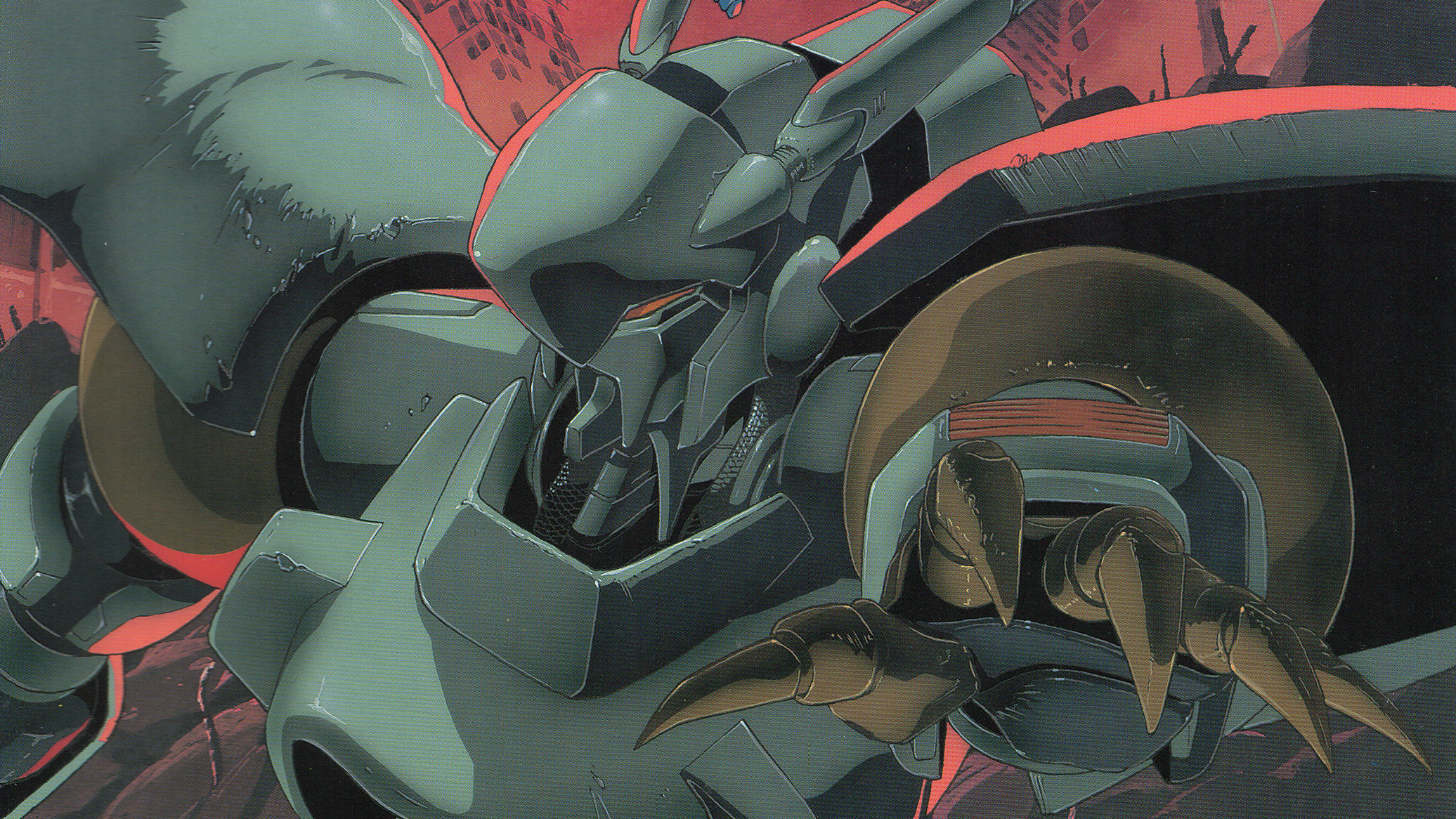
Pasokon Retro is our regular look back at the early years of Japanese PC gaming, encompassing everything from specialist '80s computers to the happy days of Windows XP.
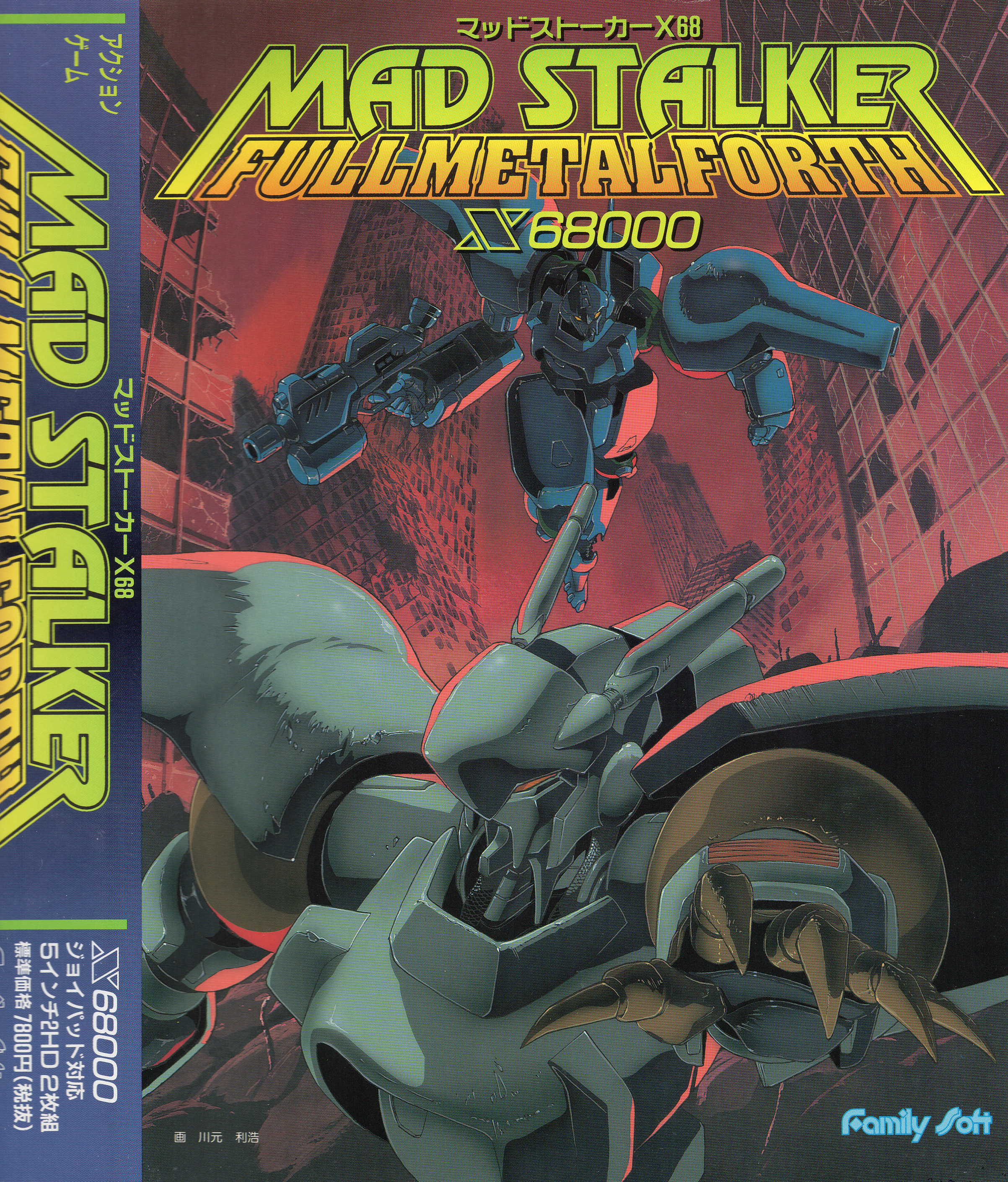
Before making shmup masterpieces like Radiant Silvergun and Ikaruga, Japanese developer Treasure perfect another style of game: the beat 'em up. Guardian Heroes is one of the best the arcade-born genre's ever produced, with stages that branch off in all directions leading to several vastly different endings. When crackling spells fill the screen as an undead warrior rains skeletal fury upon the enemies spilling in from all sides, that's just the game's idea of an ordinary encounter. The kickflips, dodges, counters, and multi-hit combos used to unleash all this mayhem feel like they must have been inspired by some perfectly crafted one-on-one fighting game.
But they weren't. They were actually inspired by a little computer game called Mad Stalker.
This 1994 side-scrolling beat 'em up by Fill in Cafe, best known in English-speaking circles for… nothing at all, really, and vaguely remembered in Japan for a series of schoolgirl-based fighting games, is a strange beast. It uses the unmatched raw might of Sharp's X68000 PC, a home computer so powerful it boasted more than a few nigh-perfect ports of '90s arcade games, to run a single plane beat 'em up. Every area is perfectly flat. Every stage is a single pixel thick.
It'd be disappointing if it wasn't such a great idea. By sticking to just one "line" of action the up and down directions on the keyboard (or a compatible joypad) are freed from the usual boring act of letting me awkwardly moonwalk up to Bad Guy A or slowly shuffle my way down to Bad Guy B. Instead they let me jump, double jump, crouch, and execute all the exciting aerial kicks and sneaky low sweeps that come with these moves. And I can pull them all off as quickly and fluidly as I do in any Street Fighter-like fighting game.
It's this keen focus on the fighting that gives my pleasantly nimble mech access to the sort of moves most other beat 'em ups can only dream of. I've got air throws here. Air throws. Is there anything more satisfying than sending a giant lump of angry metal crashing into the ground from 20 feet up in the air?
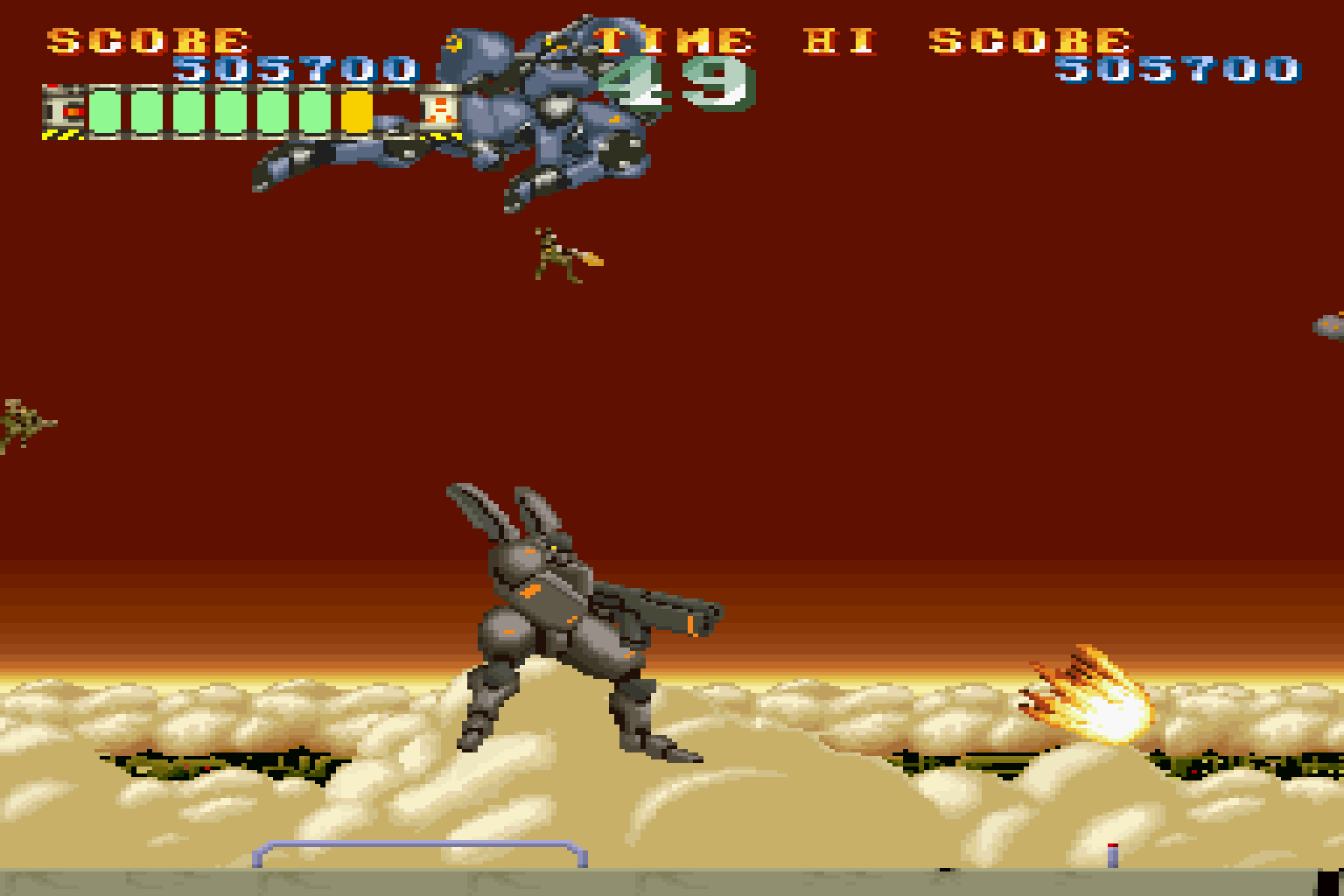
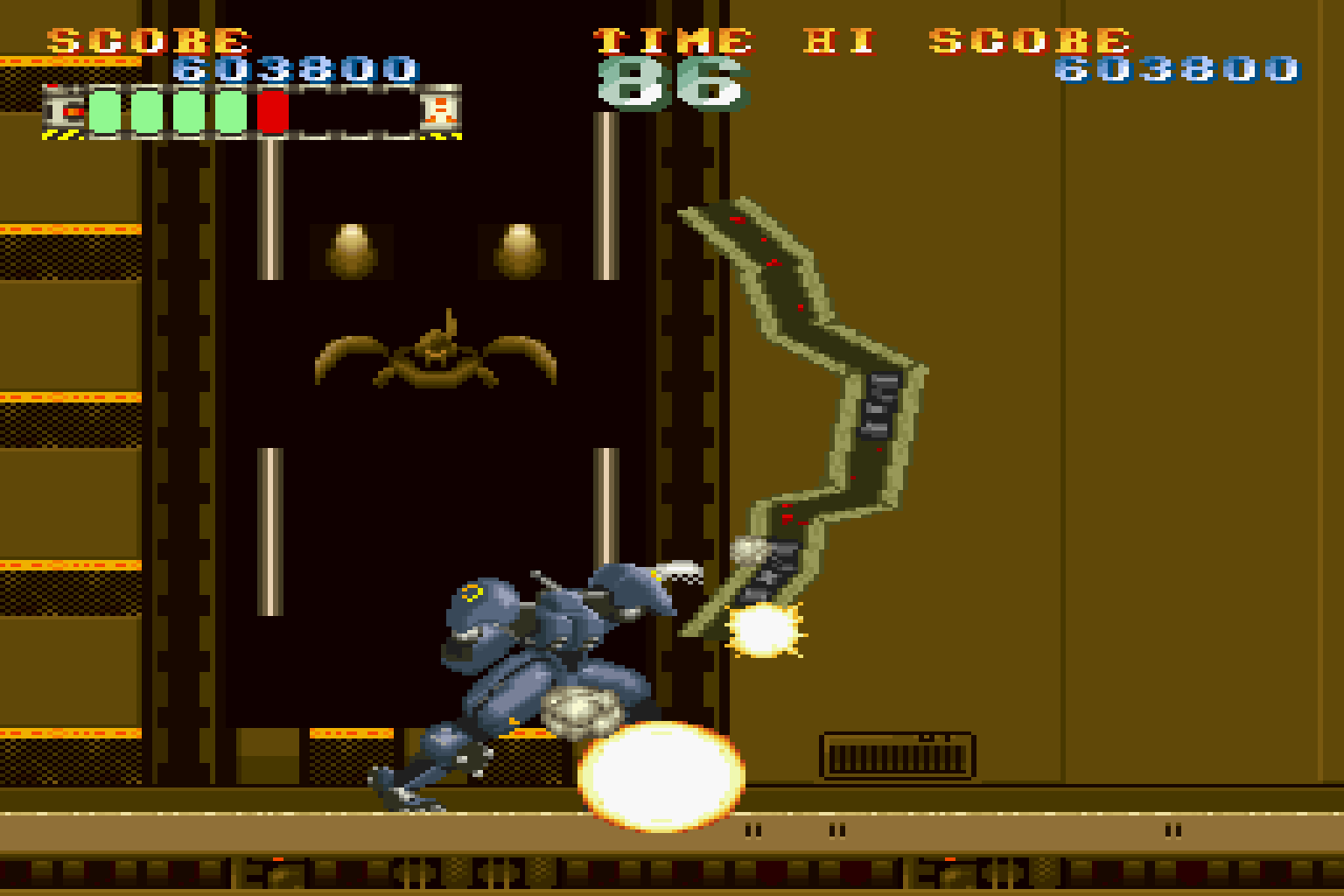
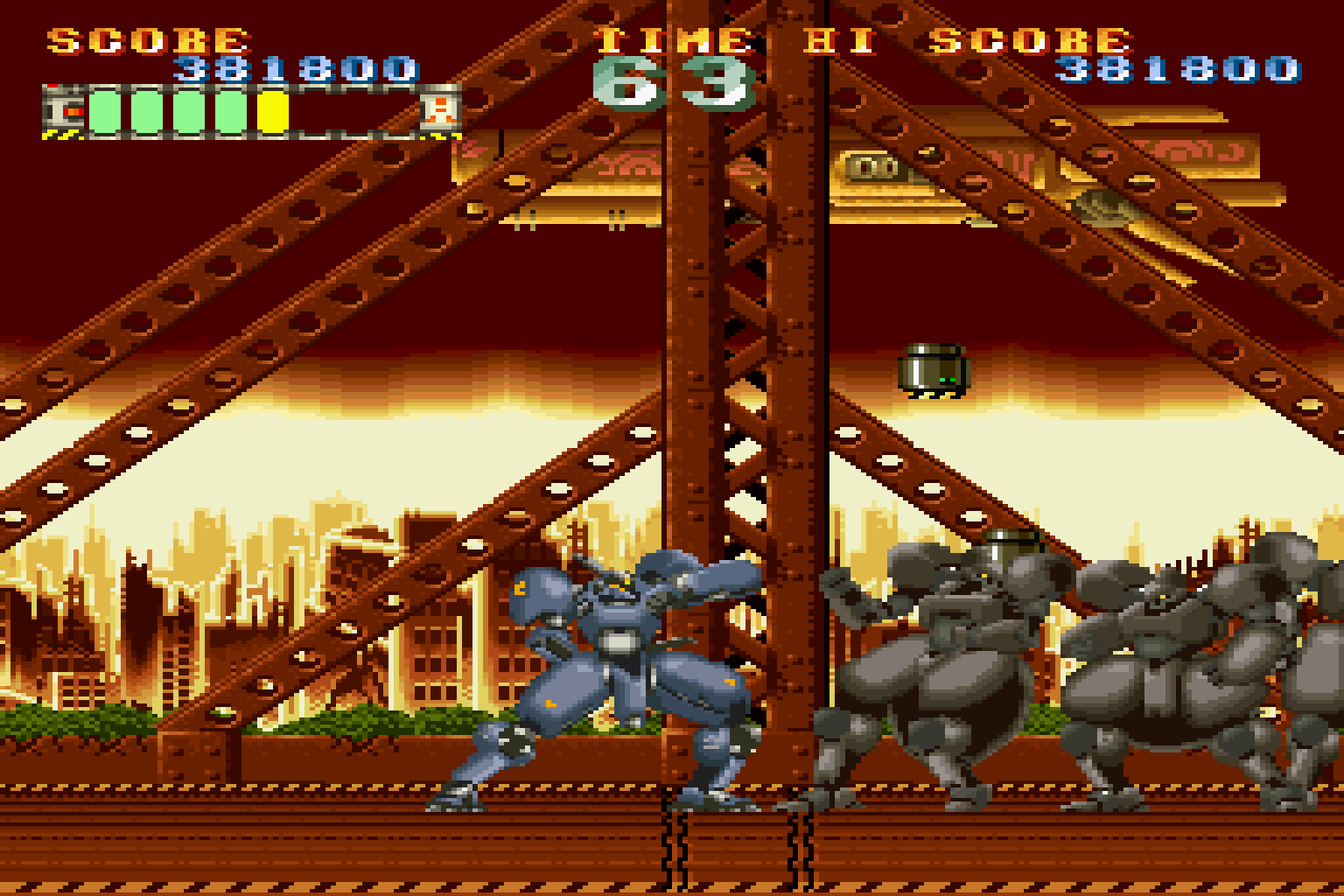
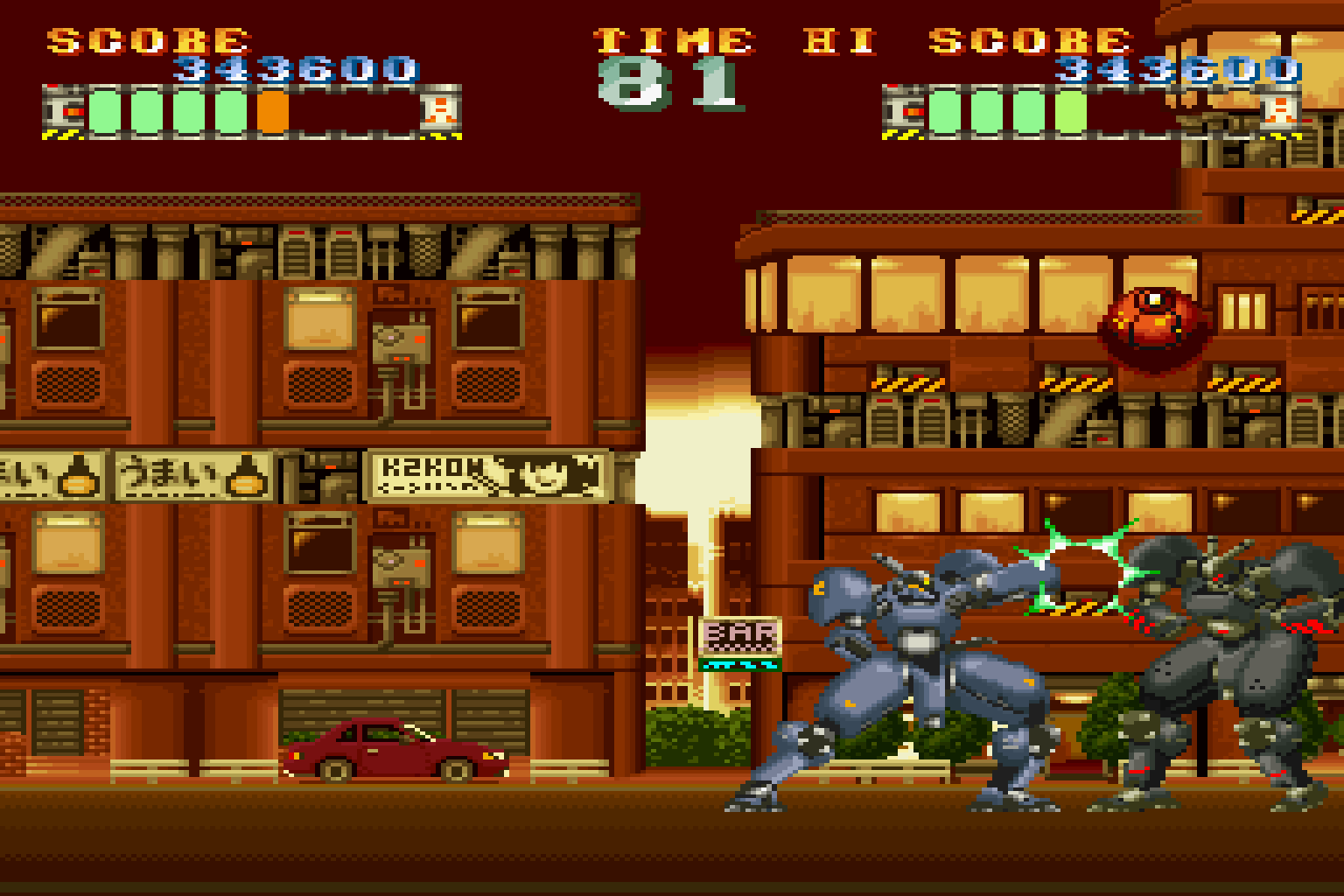
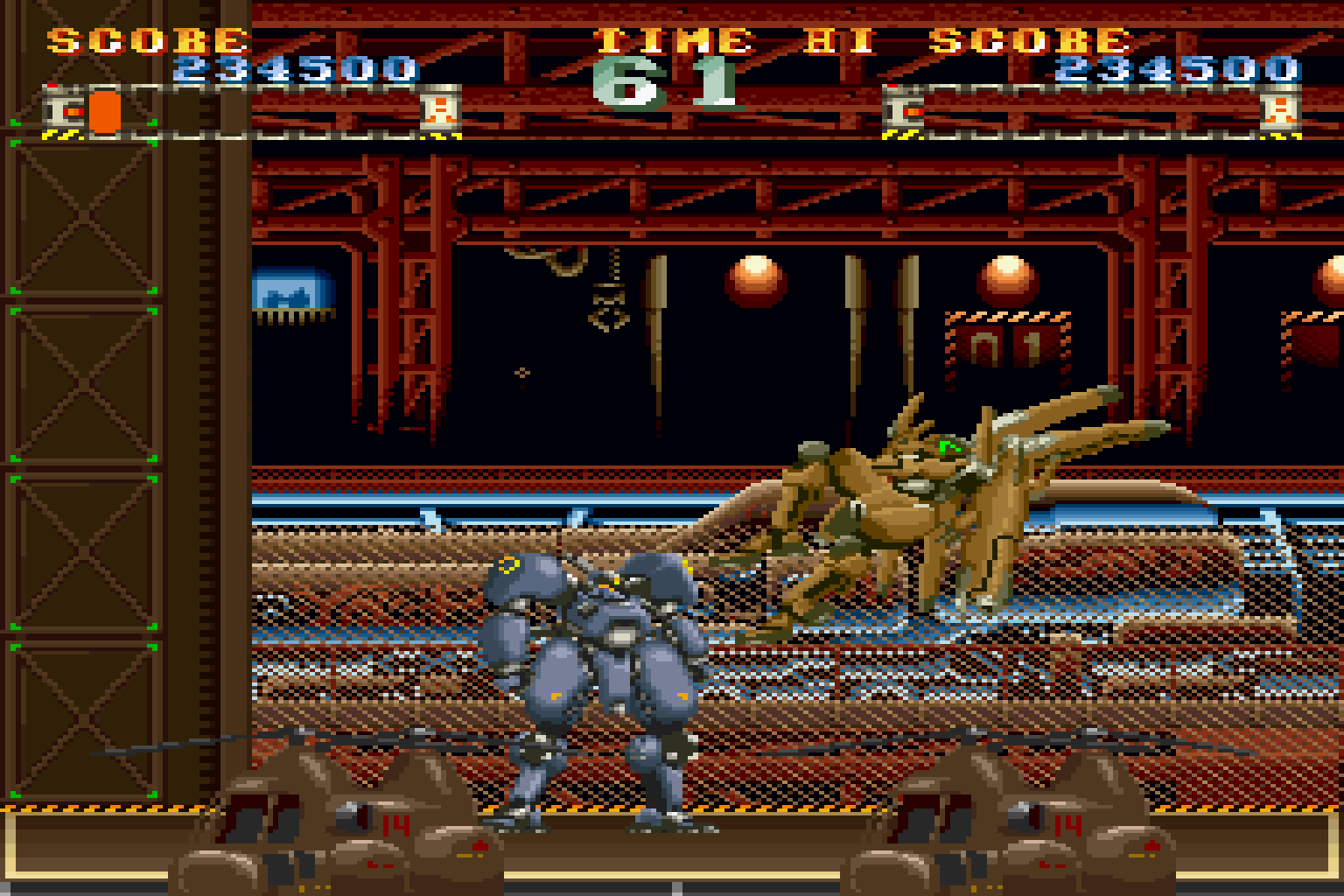
Normally the answer to that would be "No." But this is Mad Stalker, a game that can't help but go the extra mile. At the most basic, there are two attack strengths—weak and strong—tied to two separate attack buttons. So far so ordinary. But the great thing is that even on a game that takes up less disc space than a single modern screenshot, this always throws out two very different moves: a quick elbow jab vs a slow standing uppercut, for example.
Holding forward while pressing the same attack buttons alters not just a standing move's properties but its animations as well, that quick elbow strike becoming a knife hand jab with longer reach—and slightly longer recovery time too. Double-tapping forwards or down before attacking causes my mech to perform one of two different kinds of rushing blade attack, the length and power of each depending on the strength of the attack. And as if that wasn't enough, a hadouken-style input makes my mech pull a gigantic gun out of nowhere, firing a slow moving shot straight ahead. I have a response for every situation, it's just on me to learn how to use them well.
And I need to do it quickly, because Mad Stalker's always looking for new ways to turn something I thought I knew into a health-sapping problem. This is why Mad Stalker introduces floating electrified orbs into the mix just as I start getting overly confident with aerial attacks. The belligerent balls controlling the upper half of the screen force me to rethink my once-sound strategy on the fly. A later boss can drag my mech towards it and initiate a painful grab, encouraging me to either keep away or use quick, careful hit-and-run tactics. Airborne enemies might quickly swoop into the unreachable background to reposition themselves instead of trying to pass directly overhead, making me rethink my usual response.
The good news is that however creatively they're swooping around the screen, there are only ever two or three large enemies sent my way at a time. The bad news is I'm expected to take them all seriously. Any nameless mech the same size as my own has a similar set of moves, and probably a few unique ones on top. Boss battles are even more stressful. The AI's alert and aggressive, happy to wait for me to stand my ground, arm raised defensively in front of me as I anticipate an incoming mid-height attack, only to respond with a low kick to the steel shins instead.
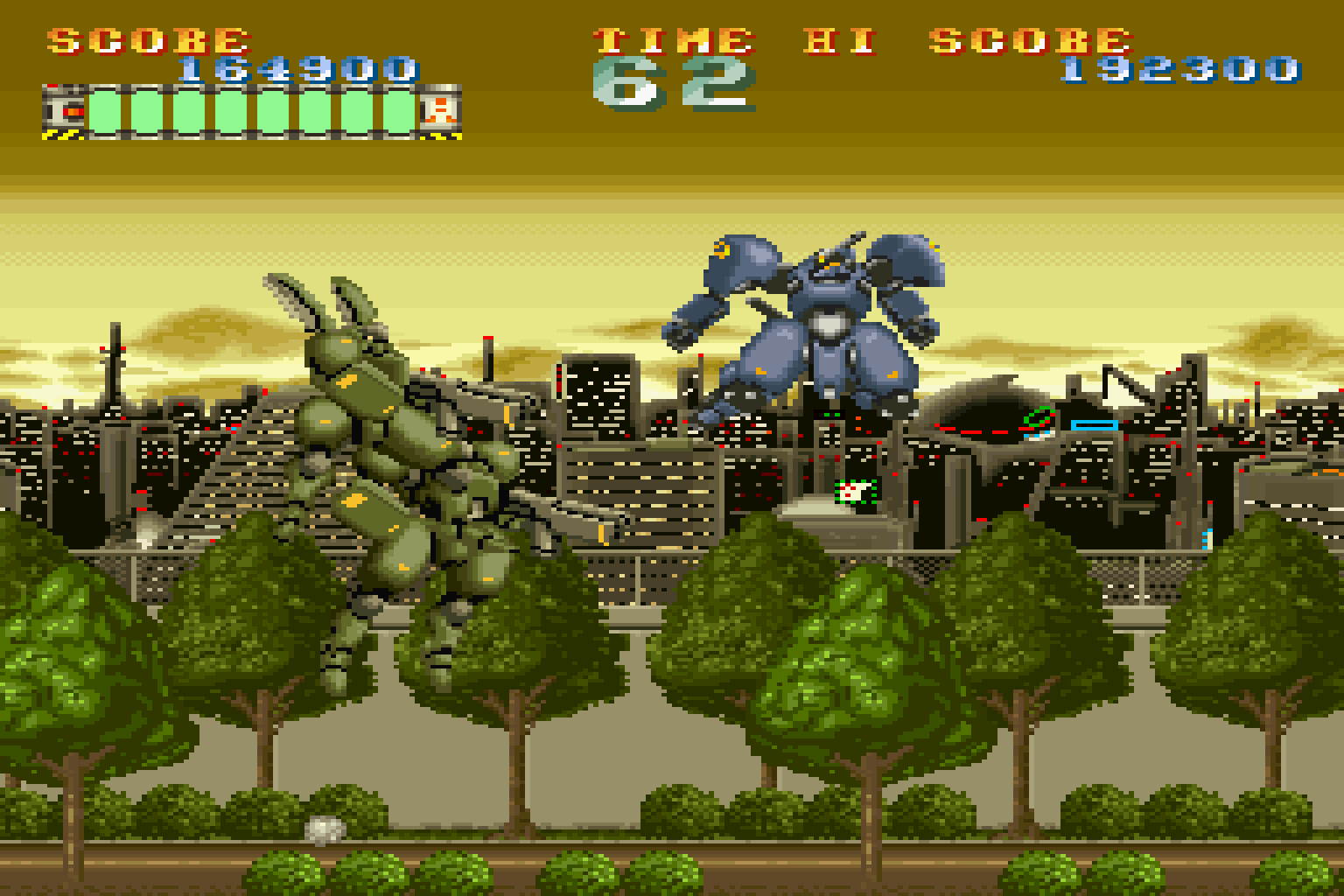
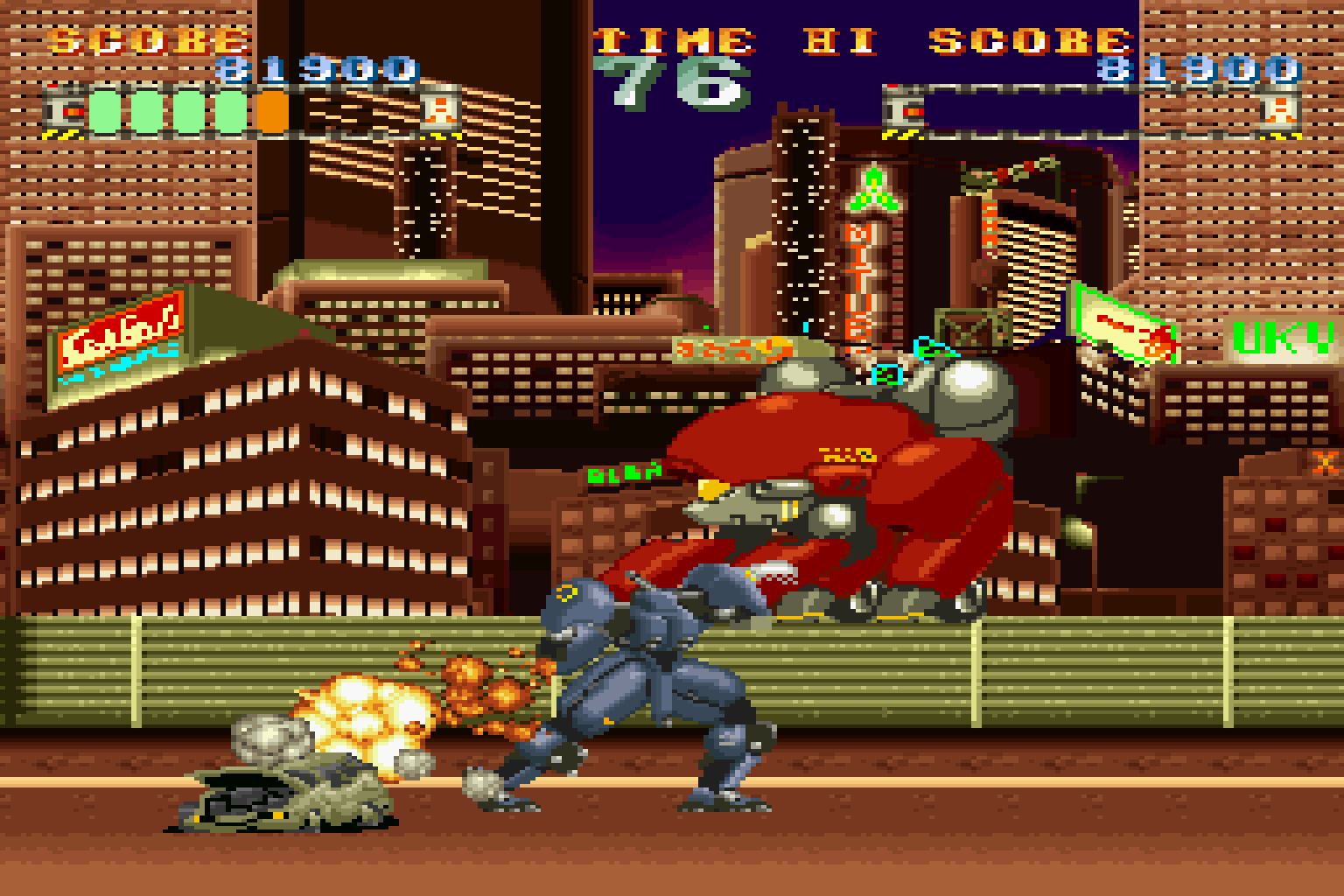
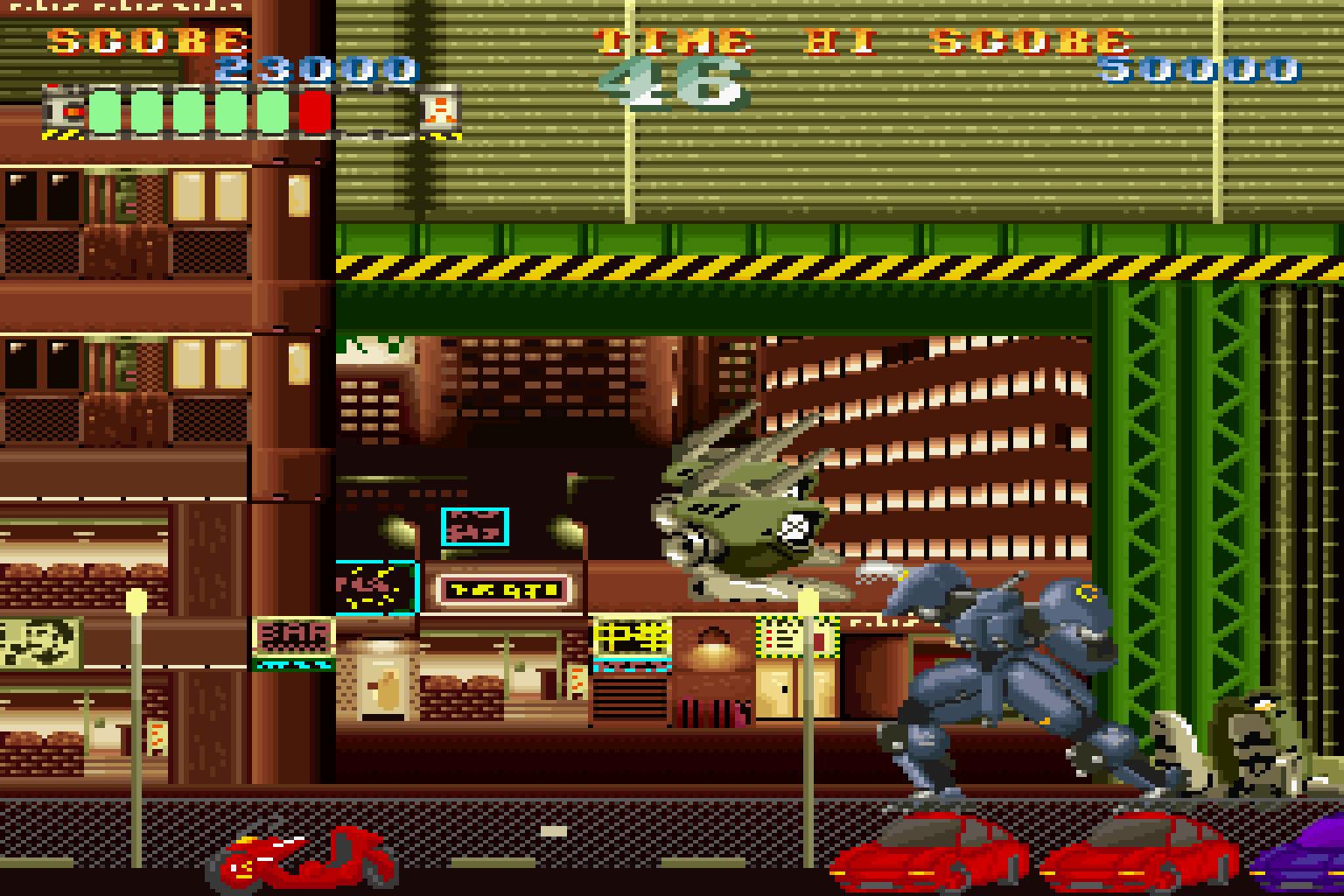
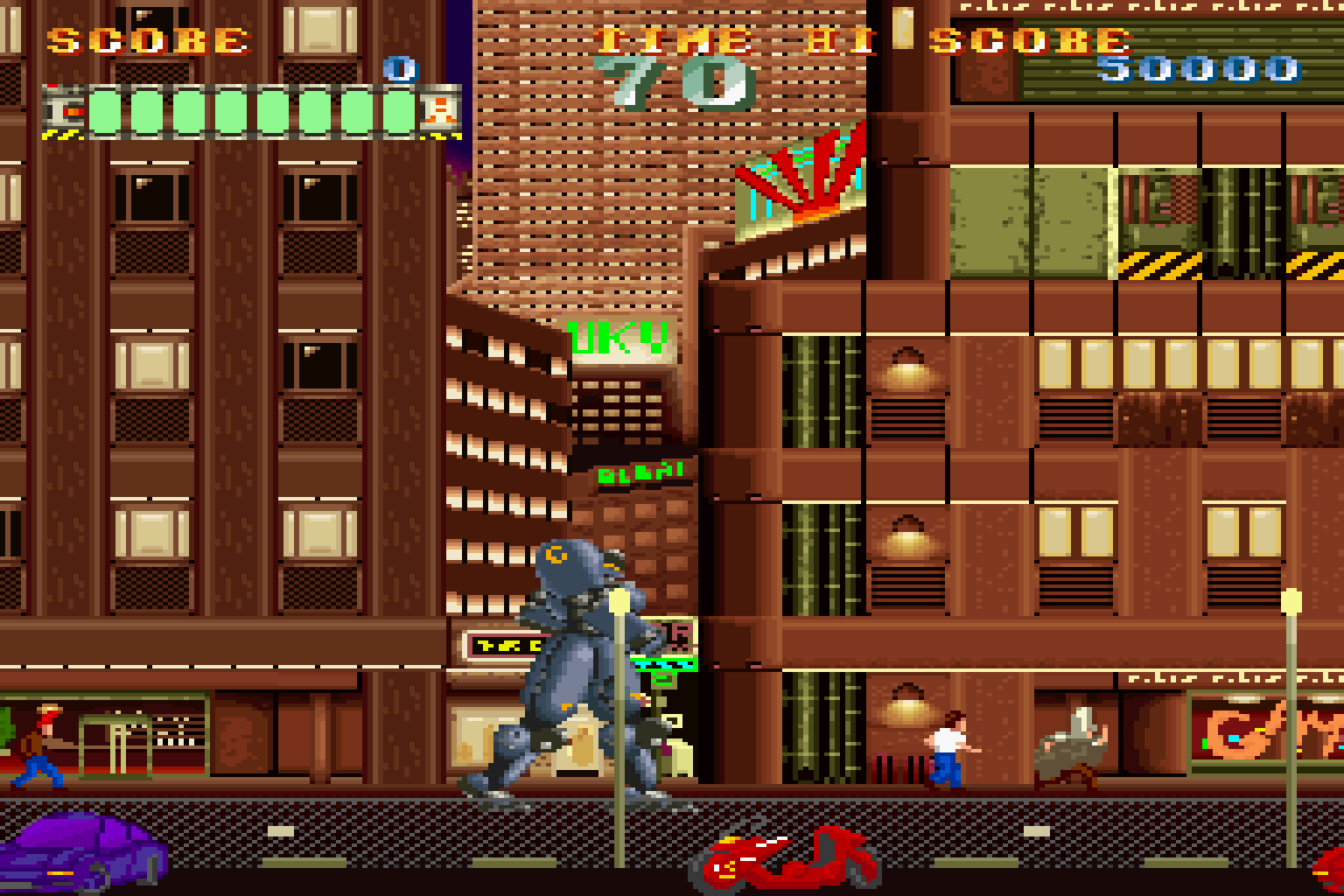
I had no idea Mad Stalker was this in-depth before I bought it from Project EGG's online download store a few years ago. I just knew I liked the idea of punching mechs in the face with another mech.
Luckily for me Fill in Cafe were clearly fans of the same sort of thing, keen on making sure the fighting was as exciting for the easily swayed like me as it was mechanically satisfying for more refined tastes. Something that's incredibly important in mech games—and a detail that's often missed—is quickly establishing a sense of scale. You can tell me I'm a 8ft tall bioengineered pilot sitting inside a gigantic war machine, but it's hard to really believe it when everything else is the same size. Mad Stalker rather cleverly gets around this by setting the first stage within an ordinary city, and makes the effort to show cars, street lights and even people from the very beginning. I don't need to check the manual to know how big my mech is, because I can see tiny people running about below and (accidentally) explode cars driving down the lamp-lit road. I don't need someone to tell me that I'm powerful, because I just punched my way straight through a screen-high metal barrier and then challenged a samurai mech to a duel. And won.
And I don't have the time to really notice that I'm fighting the same enemies as I was 10 minutes ago because the entire stage is literally on fire. And in the next bit it's blazing ruins. And then I'm fighting on top of a flying warship amongst dirty orange clouds as tiny allied ships flit around in the background, shooting at enemy mechs. Mad Stalker refuses to be outdone by itself, never mind any other beat 'em up. It's, well, bonkers.
No, that's not it. Mad Stalker's something to be Treasured.







